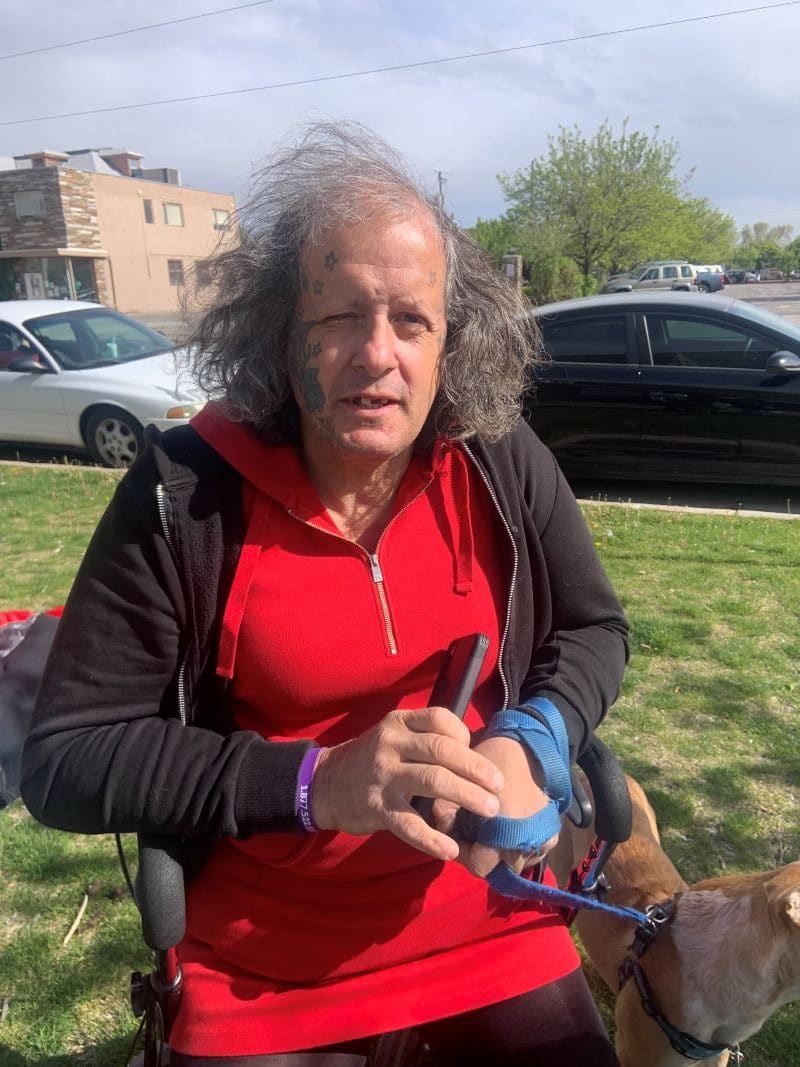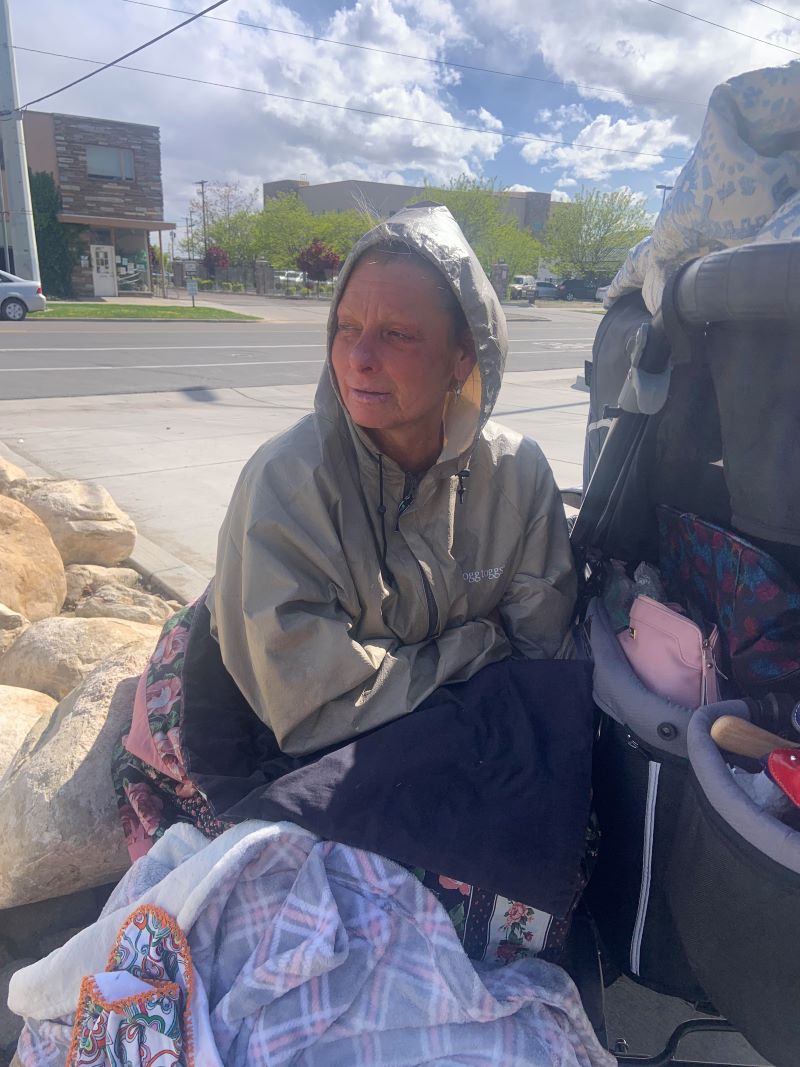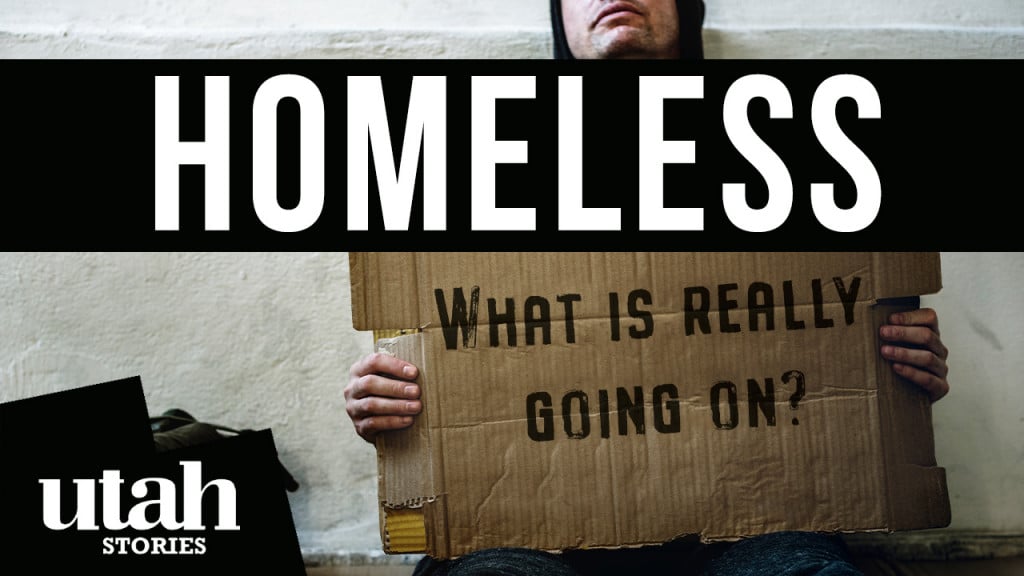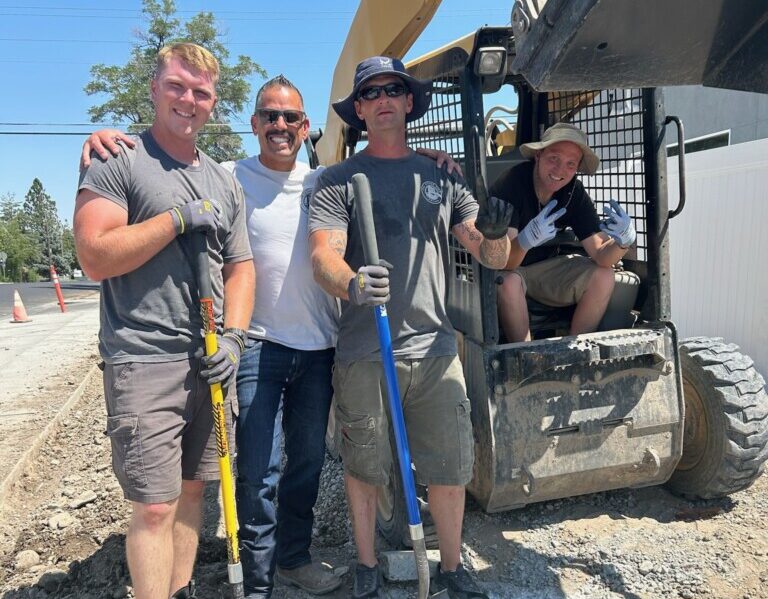Editor’s Note: This article previously incorrectly stated that the Geraldine E. King Woman’s Resource Center was operated by The Road Home Organization. The Geraldine E. King Woman’s Resource Center is operated by the Volunteers of America. The Road Home operates the Men’s Homeless Resource Center, Gail Miller Resource Center as well as the Midvale Family Homeless Shelter.
Salt Lake City’s “unsheltered” homeless population is swelling. There are many more homeless people sleeping outdoors than ever before. Their camps appear on the sides of roads or in empty parking lots, then after a few days, or a few weeks, or in rare cases a few months, the Salt Lake City Police come in and “clean up” the homeless encampments on orders by Mayor Erin Mendenhall. These clean-up efforts are called “abatements” and then the unsheltered are left trying to grab what few belongings they have and scurry to find a new place to sleep for the night.
Why is the unsheltered homeless population in Salt Lake City swelling to unprecedented levels?
I’ve been asking this question for six months now. Most political leaders and homeless advocates say it is because of our current “housing crisis” in Salt Lake City. They say there is a shortage of deeply affordable housing, and that far more affordable housing needs to be constructed.
Asking this same question to now about a dozen homeless people I get a much different response. “People need much more help than they are getting,” Tina, a local volunteer homeless advocate, tells me out in front of the Gerald E. King Woman’s Resource Center, “They discriminate against addicts and people with mental disorders at the shelters. They don’t want them.” Tina volunteers her time as a CNA nurse to help unsheltered homeless people find the resources that can assist them so they aren’t spending the nights on the streets where they are subject to police harassment.

Tina was standing beside Laurel as we were talking. Laurel is a trans-female who recently moved to Salt Lake City from Boise, Idaho. Laurel said that all of the shelters discriminate against trans people, but Salt Lake City’s resource centers do a much better job and allowing for trans-people to enter shelters.
I attempted conversations with two other ladies outside of the Gerelde E King woman’s shelter downtown, and I found that many of the women sitting outside of the shelter who were not allowed in, were mentally ill, ranting about the abuses they suffered. I asked Katrina why she wasn’t staying in the shelter, “They said I used the N-word, which I didn’t”. Then they took my dog from me, I miss my little feller. Then they perforated my bowels. I have a heart condition and I need a pacemaker. They are poisoning you here constantly. My dog’s name was Willy. I thought this only happened in horror movies.”
Obviously, Katrina was extremely distraught, and it was close to impossible to maintain a normal conversation. Another woman told me about the tragedy of her life. I tried to ask her how long she had been on the streets; what her last job was; I asked her what the city could do to help her? She couldn’t answer any of these questions with cogent answers, she began weeping almost every time she attempted to talk.

Mental illness is obviously spiraling out of control on the streets of Salt Lake City, and according to Tina, there are currently zero caseworkers helping any of those who are suffering from mental disorders. So these women yell out, scream profanities at each other or at nobody in particular, and their cries for help fall on deaf ears.
Blame cannot be placed on the staff of the resource centers, but the blame for the worsening problems should fall somewhere. It should be placed on the administrative staff of Volunteers of America, who are given the objective to assist the homeless people who are suffering from mental disorders. Providing better resources for the homeless population was the entire justification for increasing the homeless budget from $3 million, as it was when the downtown Road Home shelter was open, to $15 million today, where there are three “Resource Centers” which are supposed to attend much better to the psychological and physical well-being of the homeless. The Men’s Resource Center is operated by the Road Home Organization. The Woman’s Resource Center is operated by Volunteers of America.
Why is there currently little to no help for those who are suffering from mental disorders?
Utah Stories has called out to the administrators of the Road Home to answer this question. When I stopped at their administrative building on 1456 South Main Street, all managers and administrators were “working from home.” I also stopped by Saint Mary Manor and Palmer Court. There were three managers at Palmer Court, none of which would speak to me even off the record about the homeless problem. Hopefully, at some point, the Road Home and Volunteers of America will respond to the obvious failures of the current homeless resources.
RELATED CONTENT
Homeless Advocate Claims SLC Mayor Has a Conflict of Interest in Handling Homeless Situation
Why Is the 600% Increase in Homeless Spending Resulting in More Homelessness in Utah?
Homeless Families Braving the Cold Rather Than Stay in Shelters in Salt Lake City
An Alternative Salt Lake Homeless Solution: Switchpoint May Be the Answer
Homeless Policies in Salt Lake City: Paying off? Or an Endless Money Pit?
Subscribe to Utah Stories weekly newsletter and get our stories directly to your inbox






